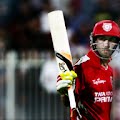We can blame Ishant Sharma and R Vinay Kumar for India’s pathetic bowling show in the last few series’. They have been poor no doubt, but it is also time to admit that slowly but surely bowlers are being pushed out of the game in the one-day format. Remember, Australia’s bowlers were thrashed in the second one-dayer at Jaipur in spite of the fact that their batsmen had put up a mammoth 359 on the board. And, their bowling wasn’t as bad as the performance delivered by the Indians on Saturday. Yet, they lost the game with plenty of overs to spare.
Increasingly, bowlers are finding themselves disillusioned from the one-day format of the game. In T20s, of course, they would have given up hope, but till a few years back, bowlers had an equal opportunity to succeed in the 50-over game. That is the not the case though anymore. Many factors have been responsible for turning the 50-over contest into a batsman’s paradise. All the rule changes and innovations brought in the ICC have been done keeping the batsmen in mind. The bowlers have pretty much become fodder for these batsmen.
First and foremost, the two balls from each end rule has taken out the occurrences of the ball being replaced midway through an innings owing to its discolouration. Remember the fourth umpire running in with a box containing used balls to figure out which ball will make the current match situation fair for both the sides? It was a major irritant, but what ideally should have been done was try and manufacture a ball that lasts the full 50 overs. The two-ball rule has taken a significant advantage for bowlers out of the game, making their task tougher, it if already wasn’t difficult. In the 90s and 2000s, reverse swing was a major factor in one-day matches.
Bowlers could run in at the death and hold their own against the batsmen in the slog overs displaying their skills with the old ball. The contest of reverse swinging versus the batsman swinging their bats not only made a battle an even one, but an interesting one as well. This was evident in sub-continent conditions as well where the ball got rough owing to the hard grounds around the 35th around the world had to use their skills to overcome the ball moving in the other direction.
Where is the challenge for the batsmen today? The field restrictions have made batting a walk in the park for them. They can easily clear the field in the first 10 overs, knowing very well where the gaps in the outfield are. Even if they stumble, they can rely on the batting power play later in the innings. Also in the non-power play overs, only four fielders are allowed outside the 30-yard circle, instead of the five earlier. Add to that shorter boundaries and heavier bats, and it only gives credence to the theory that one-day cricket is completely a batsman’s game. --By A Cricket Analyst




